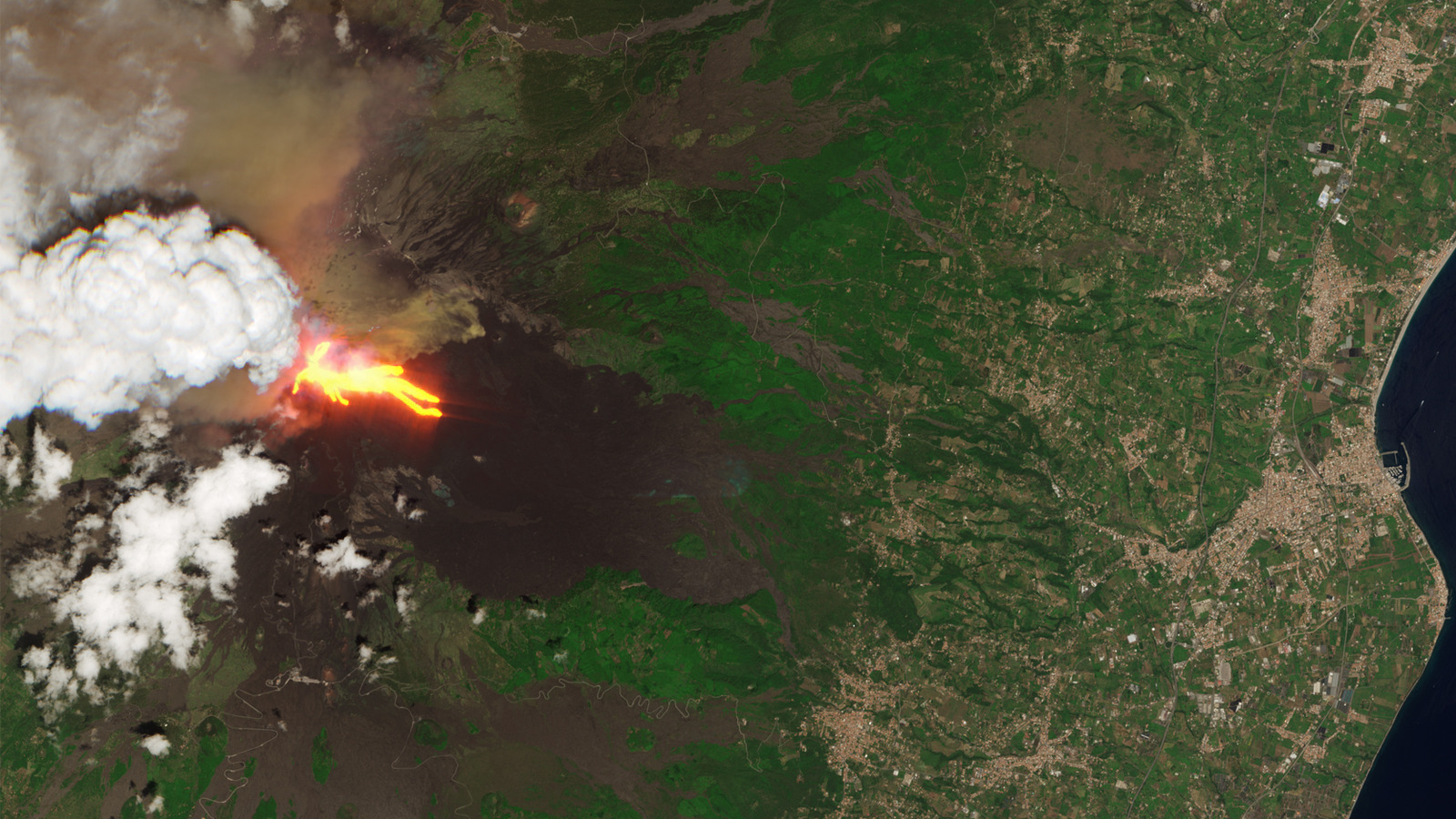Mount Etna's terrifying eruption from orbit | Space photo of the day for June 4, 2025
A satellite from the European Space Agency captured huge plumes of ash and smoke erupting from Europe's largest volcano.

On June 2, 2025 around 10 a.m. local time, residents of the island of Sicily began fleeing as Europe's largest volcano suddenly erupted.
What is it?
Mount Etna's eruption, captured by the European Space Agency's (ESA) Copernicus Sentinel-5P satellite, revealed massive plumes of ash and smoke, as lava streaked down the side of the volcano. The ash cloud rose to a height of 21,300 feet (6,500 meters), almost twice as high as Mount Etna itself, standing at 11,000 feet (3,350 m).
Data from the satellite also found sulfur dioxide in the plume as lava fountains flowed down Mount Etna's eastern slope with a smaller flow to the south, according to ESA. The sulfur dioxide can create a volcanic smog that is hazardous to breathe.
Where is it?
Sitting on the eastern coast of Sicily, Italy, Mount Etna towers over the landscape below, with a diameter of 22 miles (35 kilometers).
The pyroclastic flow — a fast viscous mixture of gas, liquid ash and rock fragments — made it only a little over a mile (2 km) down the volcano, stopping in the Lion Valley, or Valle de Leone, which acts as a natural containment area. The flow traveled the entire distance in less than a minute at the eruption's climax at 11:23 a.m. local time, according to the Associated Press.


Why is it amazing?
Mount Etna has been erupting sporadically for centuries. Its volcanism has made for the stuff of legends, as one eruption is suggested to have held off the army of Carthage (now northern Africa) in 396 B.C., according to the Associated Press.
More recently, Mount Etna has been active in the past few months, with this eruption being the 14th episode since March 2025 after a 19-day lull. Experts consider this event a medium-sized eruption which probably started with the partial structural collapse of the southeastern crater. The authorities announced there was no danger to the public and no injuries were reported, though tourists hiking in the area began fleeing when rock and ash began exploding out of the volcano.
Get the Space.com Newsletter
Breaking space news, the latest updates on rocket launches, skywatching events and more!
ESA's Copernicus Sentinel-5P satellite caught the eruption using its wide swath high-resolution multispectral imager that includes 13 spectral bands for imaging Earth's vegetation and landscape, capturing historic moments like this one.
Want to learn more?
You can read more about Mount Etna's eruptions captured from space satellites or seen from the International Space Station.
Join our Space Forums to keep talking space on the latest missions, night sky and more! And if you have a news tip, correction or comment, let us know at: community@space.com.
Kenna Hughes-Castleberry is the Content Manager at Space.com. Formerly, she was the Science Communicator at JILA, a physics research institute. Kenna is also a freelance science journalist. Her beats include quantum technology, AI, animal intelligence, corvids, and cephalopods.
You must confirm your public display name before commenting
Please logout and then login again, you will then be prompted to enter your display name.

